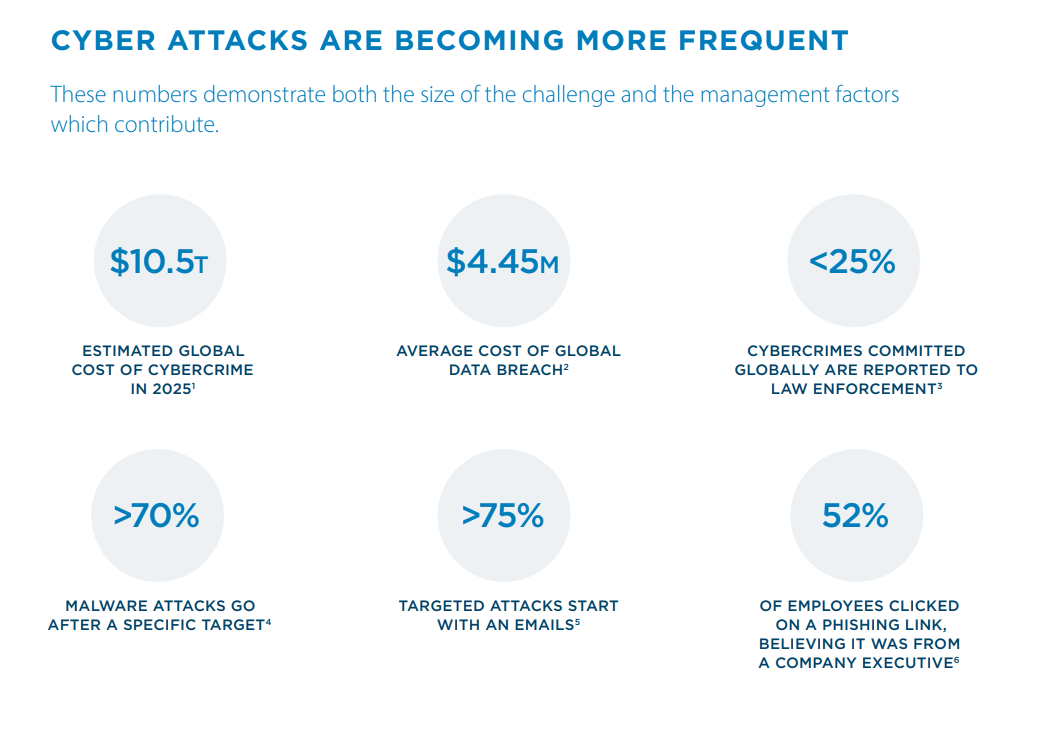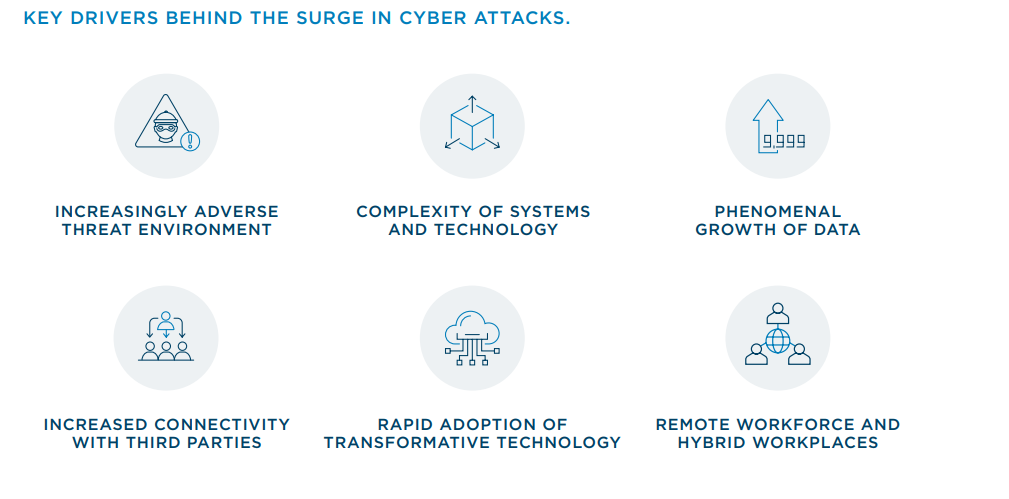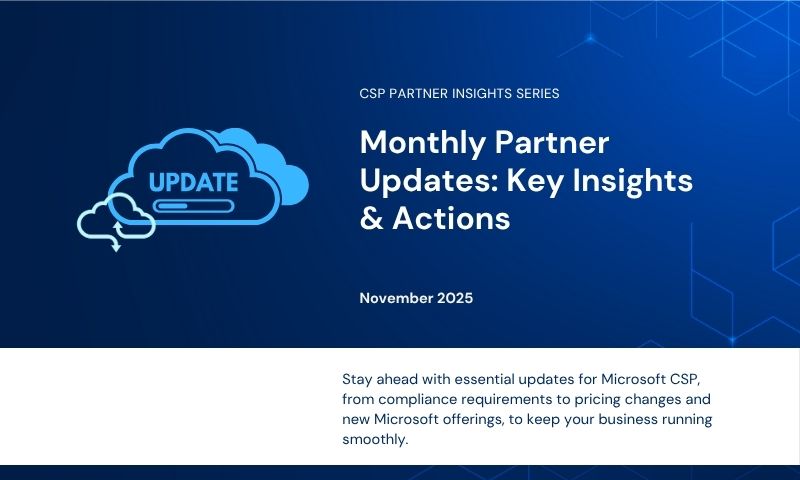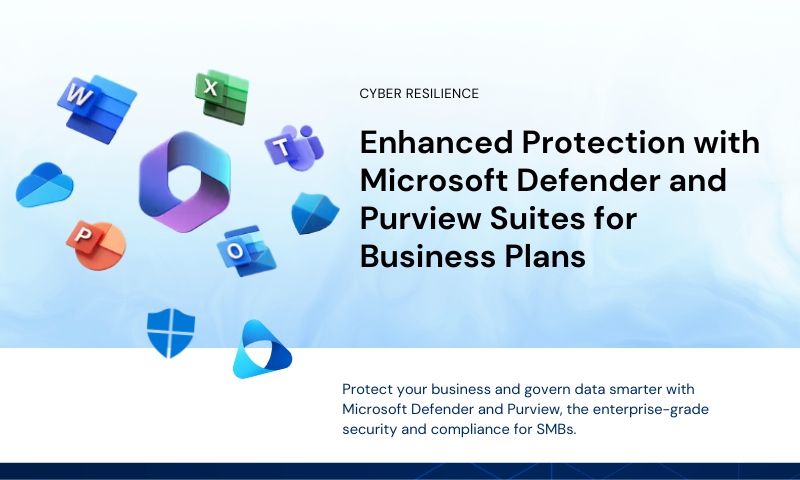The Rise of Cyber Resilience: What ANZ Partners Need to Know
7 October, 2025
In today’s interconnected world, cyber threats are no longer just an IT issue; they are a business risk that can disrupt operations, damage reputations, and erode customer trust. Building cyber resilience is no longer optional; it’s essential for safeguarding business continuity and maintaining competitive advantage.
We spoke with Ajay Unni, Founder and CEO of StickmanCyber & Stick, who shared his perspective on the evolving ANZ threat landscape and what partners need to know.
What Is Cyber Resilience?
Unni describes cyber resilience as more than cybersecurity; it’s the ability to anticipate, respond, and recover from cyber incidents while keeping the business running. It’s about preparing for the inevitable.
Unlike traditional cybersecurity, which focuses on prevention, cyber resilience assumes some attacks will succeed. The goal is to minimise disruption, maintain operations, and recover quickly when incidents occur.
As Unni explains: “Cybersecurity is about building walls. Cyber resilience is about planning what you’ll do if someone gets through them.”
Key Takeaway: Cyber resilience is about readiness and rapid recovery, not just defence.
The ANZ Threat Landscape
The cybersecurity environment in Australia and New Zealand is becoming increasingly hostile, shaped by geopolitical tensions, rapid adoption of emerging technologies like AI, and the complexity of global supply chains.
Unni notes that “State-backed attacks, ransomware-as-a-service, and increasingly sophisticated Business Email Compromise (BEC) scams are raising the bar for defenders. At the same time, AI and automation are making phishing and misinformation campaigns more scalable and harder to detect.”
Ransomware remains the most disruptive threat, with SMEs especially vulnerable as attackers exploit weak links in supply chains.
Governments in Australia and New Zealand are responding with stronger regulatory frameworks and international collaboration. Unni observes that “There’s now a clear shift from prevention-only strategies to resilience-focused frameworks. Faster incident reporting, stronger controls for critical infrastructure, and cross-border collaboration are becoming the norm.”
Recent data underline the rising urgency for partners to help customers adopt a resilience-first mindset:
- High Incidence of Cyberattacks: 62% of Australian and 68% of New Zealand businesses reported at least one cyberattack in the past year1.
- Extended Recovery Times: While 75% of business leaders expect to resume operations within five days, actual recovery often takes five to eight weeks2.
- Immature Resilience Capabilities: 50% of ANZ organisations rank their cyber resilience as ‘very immature’, underscoring the need for greater investment3.
Reference: ANZ reducing your cyber risk
Unni points out that “Extended downtime is often the hidden cost of a cyberattack. Even if no data is permanently lost, recovery can take weeks without a well-prepared resilience plan in place. Prevention is no longer enough; partners must help businesses build the capacity to respond and recover quickly.”
Reference: ANZ reducing your cyber risk
Key Considerations for Partners
Cyber resilience is no longer optional; it’s a business enabler. Customers increasingly expect their partners to act as trusted advisors who can help them navigate an increasingly hostile threat landscape. Unni advises partners to shift the conversation beyond point products to a broader outcome-driven approach. “It’s about resilience strategy, not just selling tools.”
The following 6 considerations can help guide smarter decisions when building stronger resilience strategies for your customers:
1. Adopt a Holistic Approach
Cyber resilience is a shared responsibility. A single compromise at any point in the chain, from suppliers to customers to cloud providers, can have a ripple effect across the entire ecosystem.
Action:
Help customers integrate cyber resilience into business continuity planning by running ecosystem-wide risk assessments, testing external dependencies (e.g., supply chain, SaaS providers), and using checklists and simulations to make gaps visible and actionable. StickmanCyber provides benchmarking services against global standards and identifies practical steps to strengthen resilience across the entire value chain.
2. Strengthen the Basics
Strong foundation matters. Most breaches still exploit preventable gaps like weak passwords, poor patching, or excess user privileges.
Action:
Enforce multi-factor authentication, least-privilege access, and timely patching across all customer environments. Provide audits to ensure these controls are continuously maintained. Ensuring these fundamentals are consistently applied across customer environments is often the quickest win. Unni stresses that “Multi-factor authentication, patch management, and least-privilege access are table stakes. If you don’t get the basics right, resilience is impossible.”
3. Align to Proven Frameworks
Frameworks like NIST, ISO, Essential Eight, or CIS Controls turn resilience from a vague goal into measurable progress.
Action:
Map your services to these frameworks to demonstrate regulatory alignment and global best practice. Use them to benchmark maturity, highlight gaps, and prioritise investments.
Read about Essential 8 and CIS Controls, and how they work together to strengthen cybersecurity.
4. Build and Test Incident Response Plans
Recovery speed defines resilience. Unni cautions that “The first time you test a plan shouldn’t be during a real incident. Without a tested plan, downtime can stretch from days into weeks.”
Action:
Lead tabletop exercises, simulate cyberattacks, and refine escalation processes with your customers. Help them move from theoretical response plans to ones that are proven under pressure.
5. Embed a Culture of Resilience
Employees remain the #1 entry point for attacks. Human error is avoidable only with continuous education.
Action:
Provide ongoing security awareness programs backed by leadership commitment. Reinforce learning with phishing simulations, regular refreshers, and accountability at every level. Unni emphasises that “Building a culture of resilience must start at the top. Leadership support, clear communication, and accountability across teams make all the difference. Make security an ongoing conversation in the workplace.”
6. Invest Strategically in Tools
Tools alone don’t create resilience; the right mix does. Balance investments between preventive and reactive technologies.
Action:
Help customers balance proactive defences (threat detection, monitoring) with reactive capabilities (automated recovery, cloud backups). Prioritise solutions that work together and scale rather than adding more point products.
Through Synnex’s portfolio of cloud and data protection solutions, partners can access integrated offerings for backup, disaster recovery, business continuity, and multi-cloud management.
Moving Forward
Cyber resilience is now a strategic imperative for ANZ partners. Unni highlights that the rise of AI-powered attacks and the growing interconnectedness of business systems will make cyber resilience even more critical over the next three to five years.
He advises that partners looking to strengthen resilience should start with the basics: train your people, secure your endpoints, and test your incident response plan regularly.
Unni concludes, “Balancing preventive and reactive tools is key. Prevention is ideal, but resilience planning ensures we can respond effectively when prevention fails.”
The bottom line: It’s not a question of if an attack will occur, but when and how prepared you are to respond.
The path to cyber resilience requires a proactive, strategic approach that combines robust cybersecurity investments, adoption of structured frameworks and processes, and the empowerment of people. By fostering a culture of security and collaborating with trusted partners, businesses can not only protect themselves from cyber threats but also build trust and confidence among stakeholders.





Leave A Comment